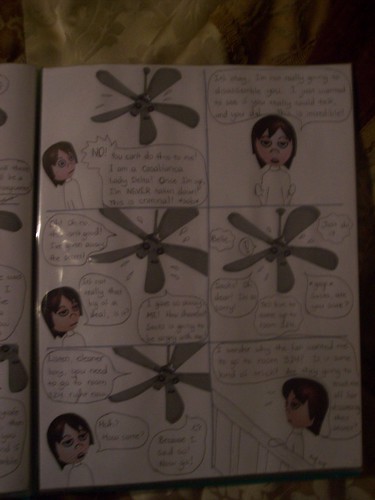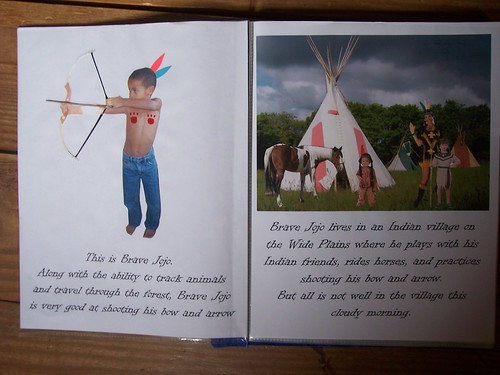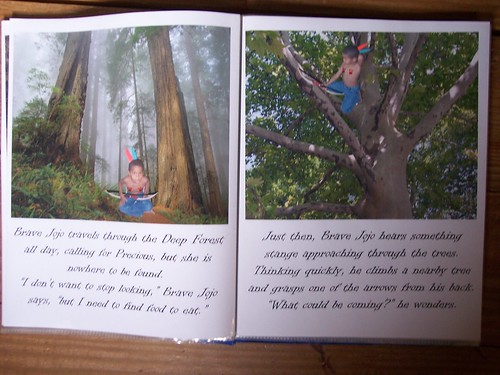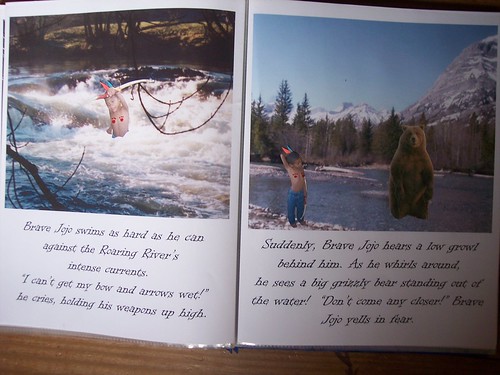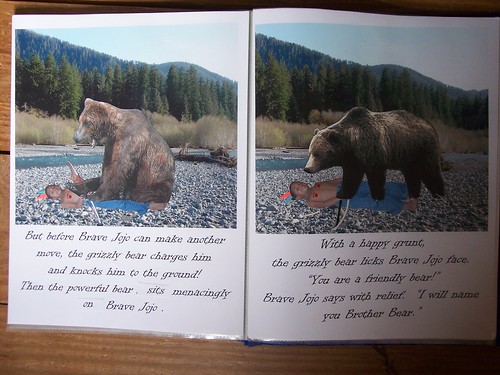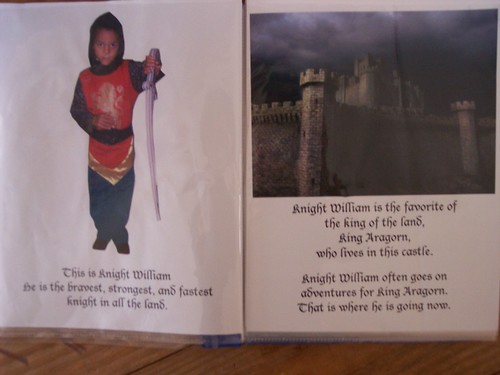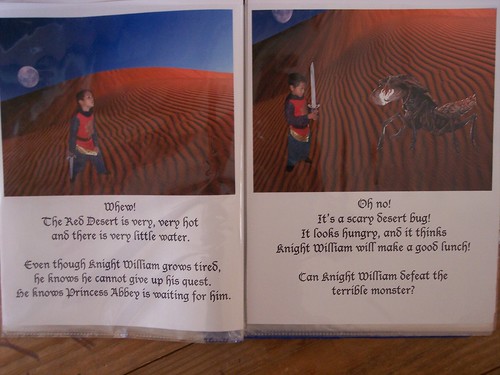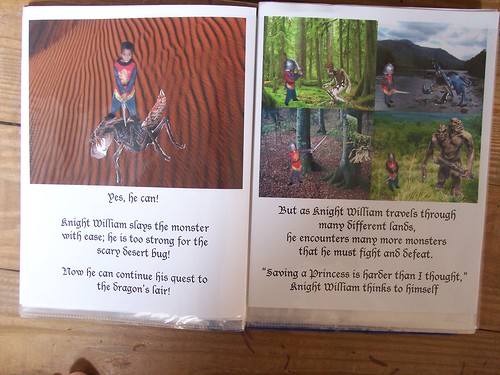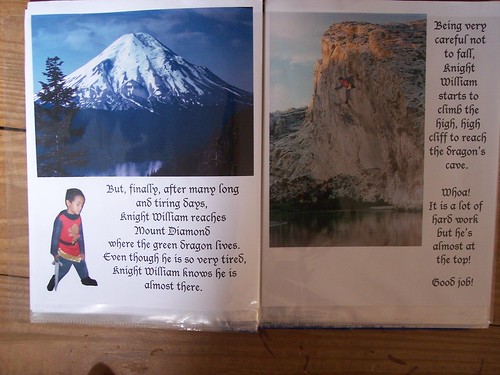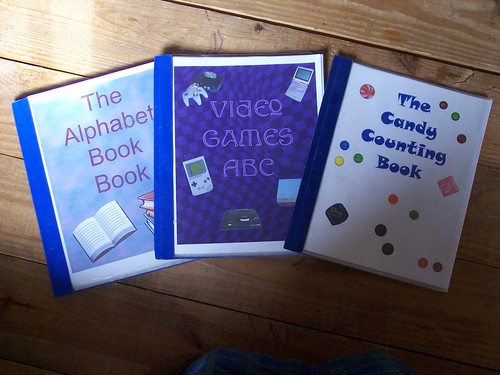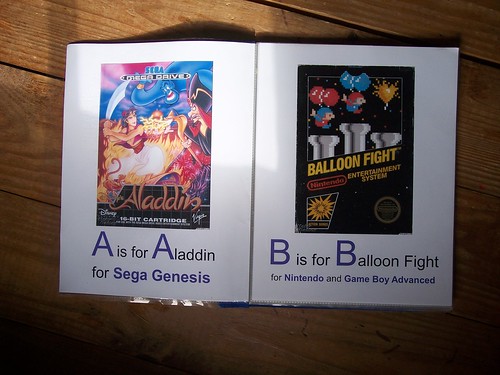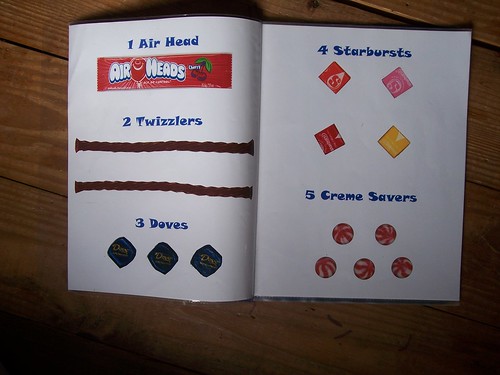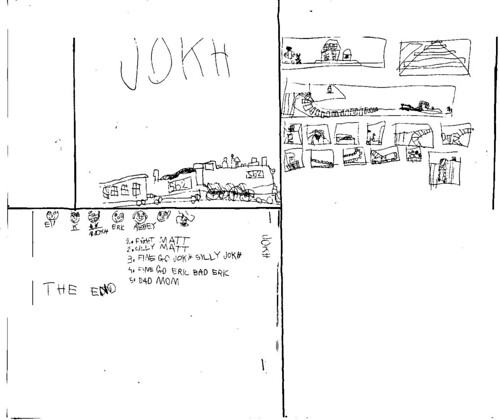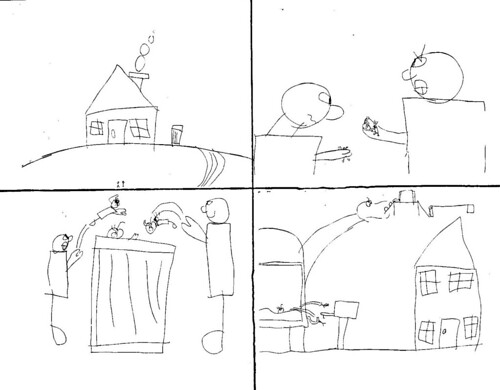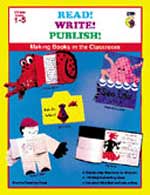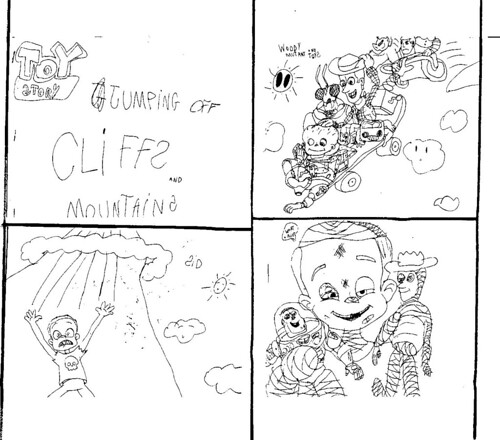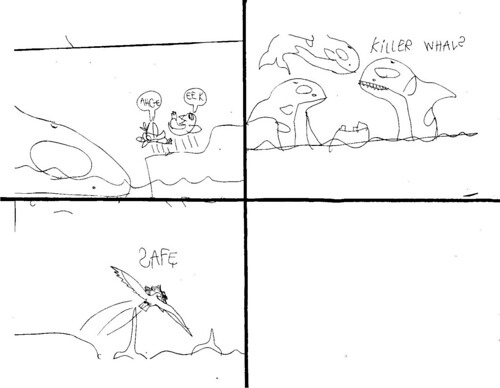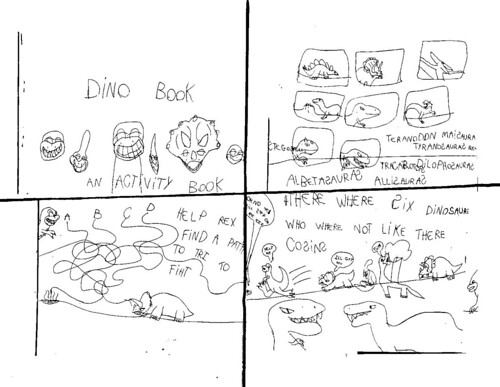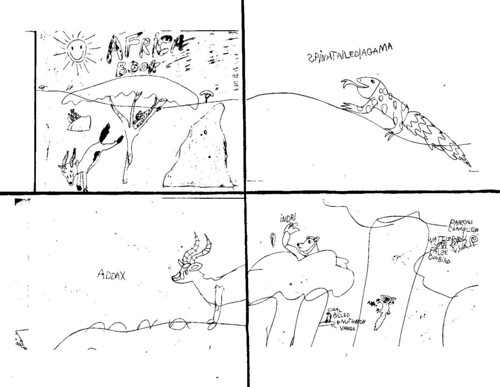I’ve written a couple posts about writing in the years from 5-10 years old found here and here, so I’ve decided to write a post about this subject for the teen years. I find that IF people decide to give space in the 5-10 year ranges for writing to develop more naturally, they really start to panic by the time their child reaches 13 years old and “college” and “adulthood” seems to loom bigger in the minds of the parents homeschooling their own.
There is a current discussion going on at my Homeschooling Creatively list about writing. Gina shared a link to a blog post she wrote as she figured out where she’s at on the subject at this time. I agree wholeheartedly with what she figured out as she found herself going through writing curriculum after writing curriculum. She finally just sat down with herself and evaluated how writing really happened for her in more of a natural and free-flowing manner; and thus, started questioning why she was feeling a need to be systematic with the approach with her daughter. So, at this time, she’s choosing to trust the natural process to writing. It inspired me to write this post about how four of my children have come to writing.
First, let me preface with some deconditioning that needs to be done about writing. When we think about writing and school, we think book reports and essays and research papers. Frankly, so much of this type of writing is not required in real life. More importantly, there are scads of other styles of writing that are neglected as valid. Further, these styles are often what is most conducive to a right-brained learner’s strengths. Some of these writing genres are: lyrical writing, poetry, skits and scripts, fantasy and creative writing, fan fiction, book and movie and music reviews, comic book and graphic novels, journals and diaries, and more. People believe that to learn how to write a research paper, one must write research papers. Maybe that is one way. But, what I have found with myself and all of my adult children so far is that having confidence in, enjoying, and knowing how to express themselves in any way (including verbally, visually or in written form) translates to being able to figure out how to write in various genres that may be requested of them later.
Here are my children’s stories (ha, pun intended!):
Eric is my artist son. His teen writing started at 11 years old. He handwrote a 100-page script for a movie he was making with his two best friends.
Inspired by his favorite video game at the time, Zelda, Eric also began writing a novel after reading one based on this game that he felt fell short of what it could be. He made it to about 35 typewritten, single-spaced pages. And it was excellent writing, though he had never had a writing lesson or curriculum before this.
Eric was a huge list-maker and has probably literally created thousands of pages of lists throughout his teen years (see an example below). He continued to draw extensively during his teen years as well. It wasn’t until about 18 years old that he (again) became inspired from his then favorite video game, Final Fantasy, to write another novel. This time, he made it to about 300 pages typewritten, single-spaced writing.
During his time in college from around age 20-22, he was required to write various essays and research papers. He had no problem doing so and receiving high marks, though he had never written one previous to this experience. Currently at 23 years old, Eric is working on two writing projects: a graphic novel and an Ancient Japanese samurai warrior atlas. Below is some of his research regarding his atlas:
Abbey, my second child and only daughter, is my nature girl, animal girl, and eventually, my writer girl. I start off with this explanation because if I had said she was my writer girl, you may think she was always writing, and she wasn’t necessarily. She really was big into nature and animals growing up; all the way until she was about 13-14 years old. In her 5-10 year ranges, she dabbled in poetry, lyrics, and short stories about animals. Not often for any of these things, and not extensive; her short stories were usually about one paragraph. Her biggest writing venue was journals, starting at about 8 years old, on her own initiation and desire. Here is a sample (and a day in the life of a young unschooler!):
Between the ages of 11-13 years of age, Abbey started to seriously look into animal careers. She volunteered at the zoo in the chimpanzee exhibit, and she applied and was accepted into a competitive veterinary camp at Michigan State University at 13-14 years old. All of these helped her know she was dissatisfied with those fields, and she was still wondering where her passion would lie. It was at that time, around 14-15, she started taking pen to paper with a novel idea, but this time, unlike every time before, the ideas kept coming. Soon, she realized that she was actually on her way to writing a novel. Further, she discovered she was really enjoying herself. And so, a complete shift occurred, and she started focusing on writing.
By age 19, Abbey had written two novels that she wanted to edit enough to self publish, but decided to take a sabbatical from writing and attend college out at Brigham Young University in Utah. As she became required to write research papers, essays, and other forms of critical writing, she was able to figure out how to do so and received high marks. Thus, again, another child is able to accomplish writing college level papers well without any previous structured writing curriculum to “teach them how”. It was simply a translation of their overall competency in expressing their ideas in a genre that was their strength area (in her case, fantasy writing).
Next comes Eli, my builder son, who is also diagnosed with high functioning autism. Interestingly, he struggled with expressing himself verbally in any form in his early years, including up until the 11-13 year timeframe. And yet, because of our strength-based environment, he did find outlets to express his ideas, particularly through building with Lego, Lego Studio, and comic book making, inspired by his oldest brother and his interest in trains. As his brain naturally shifted in that 11-13 year timeframe, he became more aware of his place in the world, and wanted to improve in his weak areas, including English related areas.
It was during this time that we started finding ways to improve his spelling and vocabulary, both extreme weaknesses for him. We also developed grammar more, which became a strength because of the “sameness” of that subject, as well as patterns of knowledge associated with it. In other words, we started with the parts initially, to build a foundation. His spelling improved from atrocious to fair, and eventually even to “good”. Vocabulary was one of those areas tough to improve in but we tried various ideas to slight success. But, to be clear, these focuses were only about 3-4 times a week for maybe up to 30 minutes. It didn’t become a spotlight; it just showed up on our radar.
There on line levitra over at this pamelaannschoolofdance.com are still many impotent men left out in the market today.
At the 14-16 year timeframe, I had him work through some of the Writing Strands books, starting with the Level 2. He wanted a way to start from the extreme basic level of constructing a thought or idea or sentence, and this was made to be student-driven. He worked through these for 1-2 years, I think. Definitely not more than that, and probably more toward the 1 year mark. He did feel it gave him a basic understanding and proficiency on how to have a basic foundational understanding of sentence structuring. His going through the Daily Grams for grammar may have also been a good modeling tool for him. He did the grammar series from the first level as well until the end, which probably took him 3-4 years, starting at around the 11-13 timeframe.
Since he continued to be serious about his desire to attend college, and because of his total lack of writing in any genre form, I decided it would be advantageous for him to work from a more formal text that required answers in longer written formatting. Because he is a math/computer science person, I decided to choose a subject in that genre that he had some interest in and would use in college: science. So, starting at 14, he began working through the Apologia science series, one text per year. I had his father sit with him initially to help him know how to navigate creating answers in verbal sentence formatting. It didn’t take long for him to pick up on how to do that. However, I still had his father check over his work consistently to keep him on the right track in this skill development.
Since that was going well, and he really was quite self sufficient in the short answer verbal response, I decided to give him the opportunity to upgrade his verbal response level, as well as delving in a less strength-based subject, at the latter end of the 14-16 year range. I had him read the chapters to Story of the World because it was more simple language and to-the-point writing which I wanted because it was a weak area for him. Eli then would provide a summary as a way to help him develop interpreting receptive language into expressive language (in other words, understanding what he reads and then turn that into written words of explanation). That was a hit and miss endeavor because of inconsistency with availability of his father’s mentorship.
At the 16-17 year range, I decided it might be good for him to simply be more exposed to good writing through reading, since he didn’t choose to do that much for himself, except for computer texts and manuals. So, I invested in some Total Language Plus booklets and encouraged him to read some classics that stretched his understanding level. For him, that was middle school level reading. Because this program was more language intensive in the activities, I felt it might be a good way to integrate spelling and vocabulary and such. It did stretch him and it did seem to give him some overall good exposure and experience with the written word.
So, between the Total Language Plus activities and readings for exposure, and continuing with the science texts year to year with his father mentoring in that area, as well as periodic summaries in history, Eli was building a foundation in the manipulation of the English language in all its facets. At 17, he chose to start attending community college to earn his Associates in Science degree. He started off with his strengths first: math. The second semester, he chose to try his first writing course. What we discovered there was it was a better fit for him with English related topics to choose an on-line course versus an in-class course. In this way, he could always take whatever time he needed to put into the assignment in order to feel comfortable with it. With an in-class course, they often would do some “free writes” in the classroom, and Eli does not process quickly and his writing would look less developed in those circumstances. Thus, the teacher questioned the discrepancy of his at-home assignments and his in-class ones. We were able to transfer to another instructor who was more understanding of why this occurred, and because her class only met once per week, all the assignments were at-home, with class time devoted to teaching new concepts and working on current papers.
For his assignments, he used his father and I as people who could critique his work in a way that would most benefit him. He wanted any grammar corrections to be edit marked so that he could study his grammar mistake patterns so that he could more effectively correct it. Many were “autism related” as he wrote as he sometimes “spoke autistically”, so it helped him catch those idiosyncracies without being embarrassed. Further, we helped him learn “paragraph patterns” by taking what his teacher was sharing and creating a form initially. Because of these supports individualized in a way that worked best for him, Eli very quickly was able to become independent in his own edits and putting together effective papers. It was amazing to visually see the number of edits in the beginning of the semester versus the handful or less of grammar edits needed by the end of the semester as well as the quality of writing increase which reinforces the idea of the effectiveness of this type of mentorship.
First semester corrections; more simple writing:
Second semester corrections; more complex writing.
A quick commentary on the mentoring style we used with Eli. It seems that there is either a “hands-off” approach to writing because anything else is considered “cheating”, or there is outright “cheating” by having a friend or family actually do the writing for the person. I knew there would be little to no progress if we were to rely on traditional teaching methods by giving an assignment, having him work through it himself, and then correct him after the fact. In that format, all sorts of bad habits are formed, you have to fail before you succeed, and it feels like a struggle as you invent the wheel yourself. I created my theory based on an unschooling mother and son I listened to at a Growing Without Schooling conference long ago as she explained that she would sit next to her son and give him word for word, if necessary, in the beginning, until he got the hang of it himself and initiated continuing on his own. Her words echoed in my mind years later as she said, “How does someone learn to write if not from someone who knows how to write?”
So, those first times with the science texts, Eli’s father would help him word for word, if necessary. He found that Eli was quick to understand the pattern of short answers in sentence format, so he was only needed to give periodic advice as he looked over his work. When they mentored with the summaries, there was more suggestions and specific ideas needed as he learned to organize thoughts and put those thoughts into a cohesive sentence. While reading books that stretched his comprehension, he occasionally would ask his father to help interpret sections with him. Finally, with his college papers, we helped with idea starters, with thought order, and then editing for grammar and flow. He might need 3-4 drafts in the beginning, but as mentioned previous, by the end of the semester, he was doing most of the things we initially helped him with independently and quite competently. In this instance, it showed that getting rid of our conditioned ideas on teaching writing paved the way for effective mentoring in writing.
Which sets the stage for my current 16-year-old, Alex. Growing up, he always loved to listen to his brother and sister do “cat stories”. These are stories that revolve around our cats that we have, each having their own unique voice and personality. In fact, Abbey made him a video story for Christmas one year found here, here, and here. In fact, every year for at least three years, she made him stories for Christmas gifts. Subsequently, he constantly begged Abbey to do cat stories for him and consistently bothered Eric for comic stories.
First, Eric worked alongside Alex and taught him to do his own video game playing, which is one venue he liked to have his siblings “make up stories” that correlated with the action involved. After Alex learned to play video games, Eric then helped him create his own commentary as he played. This happened when Alex was 10-11 years old.
Around 13 years old, Abbey decided to start mentoring Alex in story telling. They started out with creating sentences from vocabulary words he was working on. She then expanded him in creating short stories with the list of vocabulary words. When Alex was around 14 years old, Abbey decided he was ready to learn to write his own stories. It started very much like it was for Eli and his father, but definitely more help needed. Abbey would sit side-by-side with Alex and help him every inch of the way in developing his story, knowing how to proceed and what to write, and how to bring out the personalities of his characters. Alex really started to get excited about the idea that he was learning how to create his own stories from his own fingers (through typing).
Mentoring had to take a break when Abbey went off to college when Alex was 14.5-15.5 years old, but now at 16 years old, Abbey and Alex are back at mentoring in writing again. Alex begs every day to work on his book. He has completed his first story and they are in editing now, and he already has an idea for his next book. Alex is at the stage where Abbey is encouraging him to write on his own to develop his confidence in his own ability, and it’s going well. Abbey’s husband, Ben, now helps Alex with his writing as well, so with two different styles of support, it is stretching Alex even more in writing independently.
It’s interesting to realize after writing this that my two oldest children, who had natural knacks with language and/or writing, when given the time and space to come to that place on their own time table for their own purposes, fell in love with writing. In fact, Abbey has been quoted to say, “Writing is like breathing; if I don’t do it, I’ll die.” My next two children, who didn’t have a knack for writing or language, under competent mentorship in the style that they desired to learn for their own purposes, grew to love writing themselves. I remember walking with Eli on the college campus as we were straightening out some of his classes on writing at the time, he turned to me and said, “Now I understand why Abbey loves to write; I’m really enjoying it!” It supports my idea that if a parent (or educator) focuses on creating a positive relationship for each child in each “subject area”, then when it comes time to develop the skills required for adulthood, that child will embrace the process without a negative connotation from previous failed experiences and can even end up liking it versus tolerating it. Pretty cool stuff!








